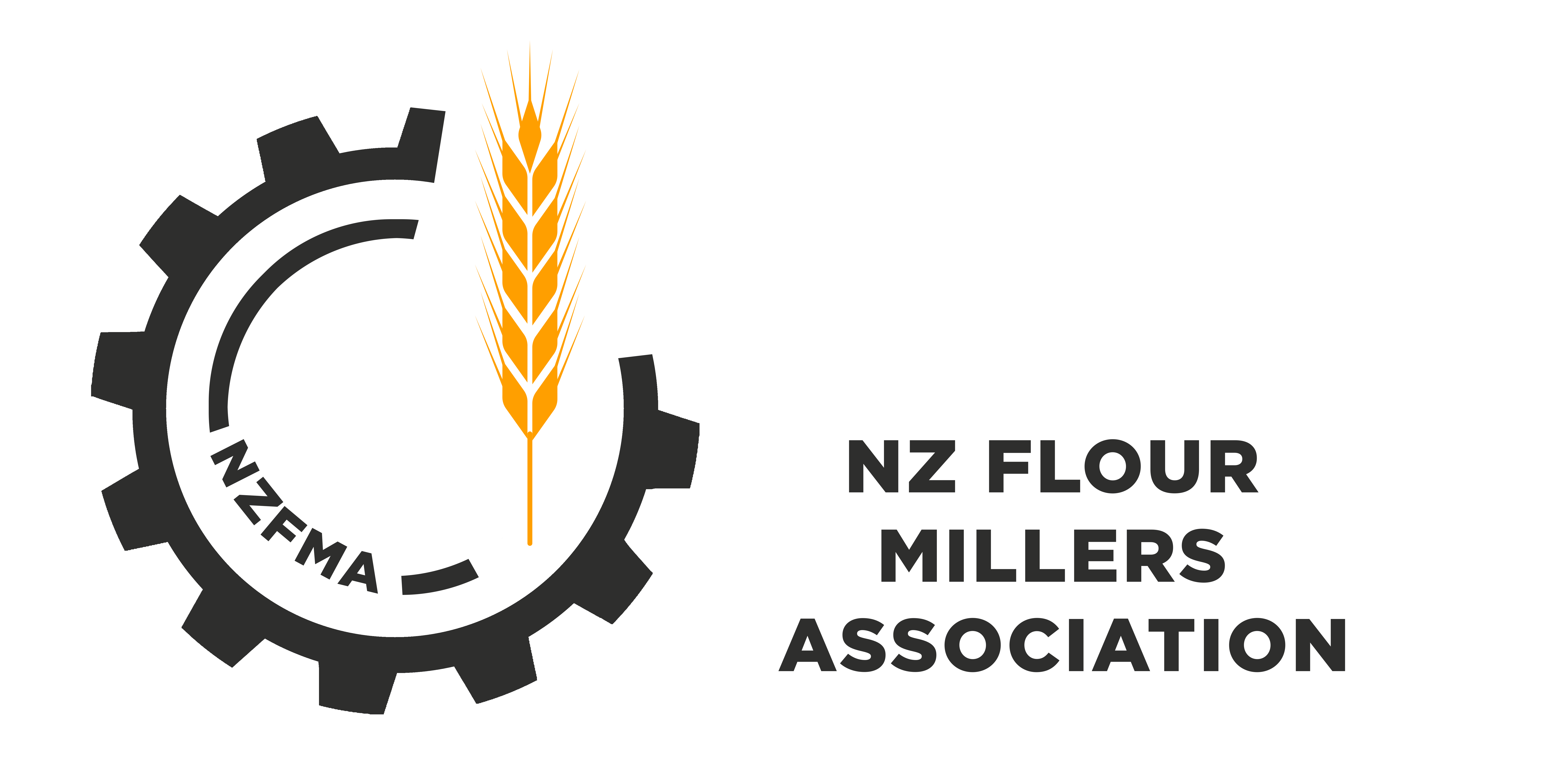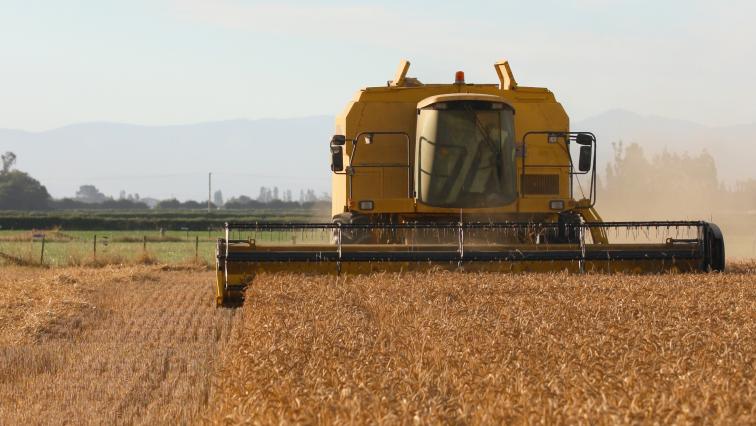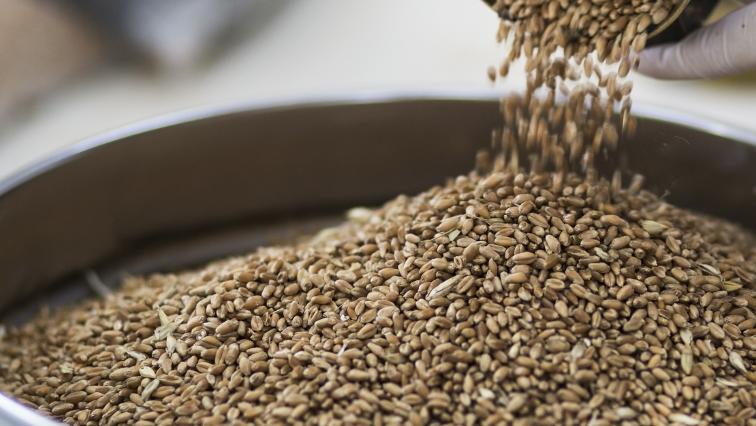Flour Milling is highly automated in New Zealand with wheat going through a number of processes including weighing, cleaning, milling and packing.
This section outlines the Flour Milling Process giving a detailed, step by step account of how wheat through the Milling Process is turned into Flour and other Flour Products.
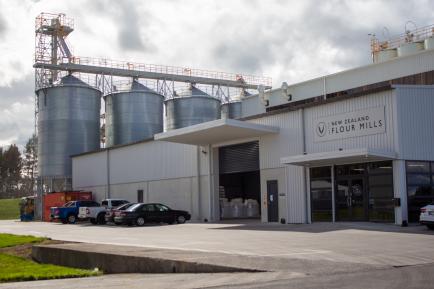
After wheat is thoroughly cleaned, it passes through the mill where four main products are made:
- Flour: the centre of the grain containing endosperm.
- Bran: the outer layers of the wheat kernel.
- Pollard: the fine cell layer between bran layers and endosperm.
- Wheatgerm: reproductive layers.
Once at the mill the incoming wheat is subjected to a series of quality control tests to measure it's moisture content, protein screenings, and sprouting. Wheat is then unloaded and stored in silos.
Once ready to be milled, wheat is removed from the silos. Before wheat can be milled the impurities that were gathered up with the wheat during harvesting must be removed. This process is called Cleaning.
Different mills use various makes of machinery to remove the small stones, husks, weed seeds gathered with the wheat during harvesting.
Cleaning plants use the differences in size, weight, shape and density to isolate and remove impurities.
Wheats are then blended before milling to achieve the quality of flour required. This process is called Gristing.
Water is added to the wheat in small amounts to ensure easy separation of the bran (outer coating) from the endosperm (inner part of the wheat). The water helps to toughen the outer bran layers and softens the inner portion. This makes the soft inner portion easier to remove. This process is called Conditioning.
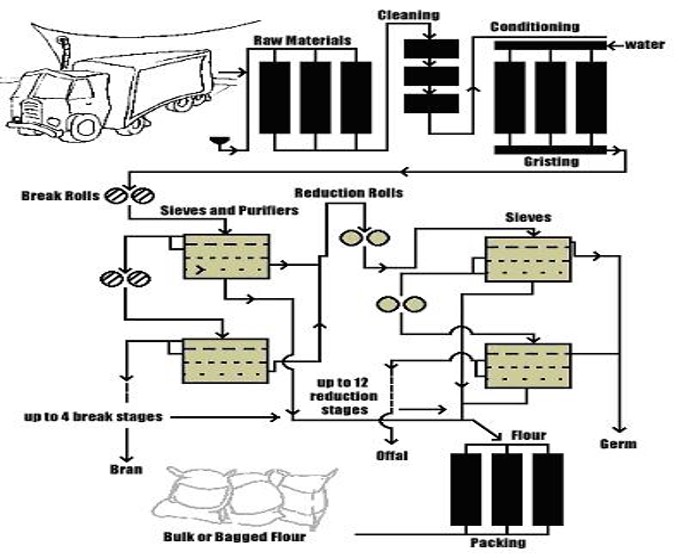
The whole milling process can be seen as a repetition of two processes - grinding and sifting.
The wheat is first passed over a series of fluted break rolls. A pair of break rolls do not turn at the same speed, the higher roll usually turns about twice the speed of the lower roll. Wheat travelling between the break rolls is ripped apart and the white endosperm is released.
After passing through each set of break rolls the particles are sorted on a sifting machine. The flour is removed and the coarse branny material is returned to the break rolls in order to separate out any flour still attached to the bran.
Semolina, which is chunks of endosperm, is also produced in the break system and this Semolina is passed onto a new series of rolls called reduction rolls.
Eventually all the wheat going through the break system is removed as either:
- flour,
- semolina,
- pollard or
- bran.
The reduction rolls are a series of smooth rolls which grind the semolina particles down into three products: flour, fine bran and wheatgerm. Each of these products can then be separated by repeated grinding and sifting.
The flour obtained by the various rolls and sifters is of differing quality depending on when it was removed from the system. Mills can blend flours from the various parts of the system to obtain flour suitable for selling.
Finally, the mill ends up with wheatgerm, or pollard which is fine bran and flour. Mills can then either package these products or sell them as bulk supplies. Mills can also add value to their product by making flour into self-raising flours, pastry flours,and premixes.
All these are produced by using flours from different parts of the system and in some cases adding additional ingredients.
